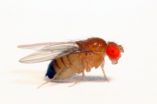(Press-News.org) Children undergoing liver transplantation are at greater risk of graft loss and death from adult organ donors who are severely obese according to research published in the August issue of Liver Transplantation, a journal of the American Association for the Study of Liver Diseases. The study, funded in part by a grant from the National Institutes of Health (NIH), found that pediatric donor body mass index (BMI) did not increase mortality risk in this pediatric population.
Obesity is a global health concern. A 2008 report from the World Health Organization (WHO) estimates that 1.4 billion adults were overweight, and of these 200 million men and 300 million women were classified as obese. WHO also reports that more than 40 million children under the age of five were overweight in 2010. In the U.S., rates of being overweight or obese have risen in children and now exceed 30% say experts.
Prior research shows the prevalence of overweight and obese donors to adult liver transplant recipients has increased during the last two decades. "Donor BMI is associated with post-transplant obesity, but not survival rates of adult liver recipients," explains lead author Dr. Philip Rosenthal, from the University of California, San Francisco's Benioff Children's Hospital. "Our study is the first to evaluate the impact of donor BMI on pediatric liver transplant recipients."
Using data from the United Network for Organ Sharing (UNOS), researchers identified 3788 pediatric liver transplants between 2004 and 2010. Analysis indicates that adult donor BMI 25-35 kg/m2 was not associated with graft loss or mortality in pediatric liver recipients. However, adult donors with a BMI greater than 35 kg/m2 increased the risk of graft loss and death in children receiving livers, after adjusting for other recipient, donor, and transplant risk factors. The authors found that pediatric donor BMI was not associated with graft or patient survival.
"While we found it common for adult donors to be overweight or obese, our analysis suggests that BMI in the 25 to 35 range should not deter liver donation," concludes Dr. Rosenthal. The authors note that causes of graft loss, death, and donor steatosis could not be determined due to lack of donor biopsies. Rosenthal added, "Further research is needed to understand the impact of obesity on donor acceptability and how this affects pediatric liver transplant patients."
###
This study is published in Liver Transplantation. Media wishing to receive a PDF of this article may contact sciencenewsroom@wiley.com.
Full citation: "An Evaluation of the Impact of Donor BMI on Survival and Post-Transplant Obesity in Pediatric Liver Transplant Recipients." Emily Rothbaum Perito, Sue Rhee, Dave Glidden, John Paul Roberts, Philip Rosenthal. Liver Transplantation; Published Online: July 24, 2012 (DOI: 10.1002/lt.23438) Print Issue Date: August, 2012.
URL: http://onlinelibrary.wiley.com/doi/10.1002/lt.23438/abstract
About the Author: Dr. Philip Rosenthal is with the University of California, San Francisco's Benioff Children's Hospital. To arrange an interview with Dr. Rosenthal, please contact Juliana Bunim with UCSF at juliana.bunim@ucsf.edu or at 415-476-8810.
About the Journal:
Liver Transplantation is published by Wiley on behalf of the American Association for the Study of Liver Diseases and the International Liver Transplantation Society. Since the first application of liver transplantation in a clinical situation was reported more than twenty years ago, there has been a great deal of growth in this field and more is anticipated. As an official publication of the AASLD and the ILTS, Liver Transplantation delivers current, peer-reviewed articles on surgical techniques, clinical investigations and drug research — the information necessary to keep abreast of this evolving specialty. For more information, please visit Liver Transplantation.
About Wiley
Founded in 1807, John Wiley & Sons, Inc. has been a valued source of information and understanding for more than 200 years, helping people around the world meet their needs and fulfill their aspirations. Wiley and its acquired companies have published the works of more than 450 Nobel laureates in all categories: Literature, Economics, Physiology or Medicine, Physics, Chemistry, and Peace.
Our core businesses publish scientific, technical, medical, and scholarly journals, encyclopedias, books, and online products and services; professional/trade books, subscription products, training materials, and online applications and Web sites; and educational materials for undergraduate and graduate students and lifelong learners. Wiley's global headquarters are located in Hoboken, New Jersey, with operations in the U.S., Europe, Asia, Canada, and Australia. The Company's Web site can be accessed at http://www.wiley.com. The Company is listed on the New York Stock Exchange under the symbols JWa and JWb.
Obese donors increase risk of death for pediatric liver transplant recipients
2012-08-01
ELSE PRESS RELEASES FROM THIS DATE:
13-year Cascadia study complete – and Northwest earthquake risk looms large
2012-08-01
CORVALLIS, Ore. – A comprehensive analysis of the Cascadia Subduction Zone off the Pacific Northwest coast confirms that the region has had numerous earthquakes over the past 10,000 years, and suggests that the southern Oregon coast may be most vulnerable based on recurrence frequency.
Written by researchers at Oregon State University, and published online by the U.S. Geological Survey, the study concludes that there is a 40 percent chance of a major earthquake in the Coos Bay, Ore., region during the next 50 years. And that earthquake could approach the intensity of ...
Researchers find potential cancer roadblock
2012-08-01
EAST LANSING, Mich. — By identifying a key protein that tells certain breast cancer cells when and how to move, researchers at Michigan State University hope to better understand the process by which breast cancer spreads, or metastasizes.
When breast cancer metastasizes, cancer cells break away from a primary tumor and move to other organs in the body, including the lungs, liver and brain. In work published recently in the journal Cancer Research, MSU researchers Kathy Gallo and Jian Chen show a protein called MLK3 (mixed lineage kinase 3) is a critical driver of breast ...
More code cracking
2012-08-01
A trio of groundbreaking publications from researchers in Northwestern University's Physical Sciences-Oncology Center (PS-OC) report important methodological advances that will enable a better understanding of how gene expression is regulated, both in normal cells and in cancer cells. This knowledge could lead to the development of more effective therapeutic agents to treat cancer patients.
The three papers, published recently in the journals Nature Genetics, Nature Biotechnology and Nature, focus on nucleosomes, a basic unit of DNA packaging, and may help to uncover ...
New study: Running mechanics, not metabolism, are the key to performance for elite sprinters
2012-08-01
Sprinters competing in the 2012 Olympics might assume their championship performance is the result of their fuel-efficient physiology.
But a new study disproves the classic scientific view that conserving energy maximizes performance in a sprinting event.
The study by biomechanics researchers Matthew W. Bundle at the University of Montana and Peter G. Weyand at Southern Methodist University, Dallas, demonstrates that metabolic economy is not an important factor for performance in events lasting 60 seconds or less.
In fact, just the opposite is true.
"That prevailing ...
In fly DNA, the footprint of a fly virus
2012-08-01
BUFFALO, N.Y. -- In a curious evolutionary twist, several species of a commonly studied fruit fly appear to have incorporated genetic material from a virus into their genomes, according to new research by University at Buffalo biologists.
The study found that several types of fruit fly -- scientific name Drosophila -- harbored genes similar to those that code for the sigma virus, a fly virus in the same family as rabies. The authors believe the genetic information was acquired during past viral infections and passed on from fruit fly parent to offspring through many generations.
The ...
State of Michigan adopts NIH's PRB progesterone therapy to combat infant mortality
2012-08-01
DETROIT — The Michigan Department of Community Health (MDCH) has unveiled the state's Infant Mortality Reduction Plan, a strategy that includes significant recommendations developed from medical research conducted by the Perinatology Research Branch (PRB) of the Eunice Kennedy Shriver National Institute for Child Health and Human Development, National Institutes of Health (NICHD/NIH), at the Wayne State University School of Medicine.
Announced Aug. 1, the plan promotes the adoption of universal cervical length screening by ultrasound and the use of progesterone in women ...
2-virus link to prostate cancer
2012-08-01
Two common viruses known to be associated with human cancers are both present – and may even be collaborating with each other - in most male prostate cancers, a new study suggests.
The research involved examination of 100 specimens of normal, malignant and benign prostate samples from Australian men.
It revealed that both the human papilloma virus (HPV) and Epstein Barr virus (EBV) were present in more than half of the malignant cancers, as well as in a high proportion of benign and normal prostate samples.
Details of the study, led by Associate Professor Noel Whitaker ...
University of Illinois professor develops tool that helps dietitians deliver info clients need and can understand
2012-08-01
URBANA - If you've consulted with a nutrition educator about how best to lose weight or manage your diabetes, high blood pressure, or high cholesterol, you may not have learned as much as you could have, said a University of Illinois professor of nutrition extension.
"Only 80 percent of the dietitians we surveyed did any pre-assessment of the client's nutrition literacy, which makes it difficult for educators to target their counseling so clients can understand and act on the information they are given," said Karen Chapman-Novakofski, also a registered dietitian.
Chapman-Novakofski's ...
Poor mental health linked to reduced life expectancy
2012-08-01
People with mental health problems have a lower life expectancy, according to a large-scale population based study published today in the British Medical Journal. The findings may prompt further research into the way doctors treat patients with even mild psychological problems.
A team of researchers from UCL (University College London) and the University of Edinburgh analysed data from over 68,000 adults aged 35 years and over who took part in the Health Survey for England from 1994 to 2004.
Participants in the study had been evaluated for mental health problems using ...
Concussions and head impacts may accelerate brain aging
2012-08-01
ANN ARBOR, Mich.—Concussions and even lesser head impacts may speed up the brain's natural aging process by causing signaling pathways in the brain to break down more quickly than they would in someone who has never suffered a brain injury or concussion.
Researchers from the University of Michigan School of Kinesiology and the U-M Health System looked at college students with and without a history of concussion and found changes in gait, balance and in the brain's electrical activity, specifically attention and impulse control, said Steven Broglio, assistant professor ...

